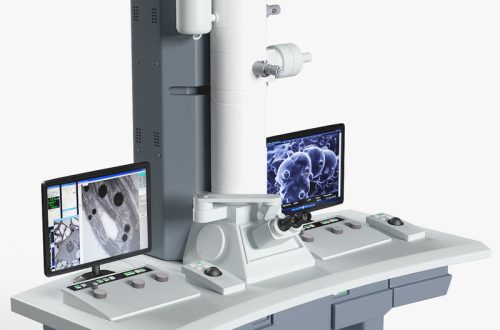Part 1: Understanding Ergonomics in the Workplace
1. Ergonomics: A Foundation for Optimal Workplace Performance
Ergonomics is the science of designing workspaces to fit the human body, promoting comfort, efficiency, and health. In the office setting, it’s about creating an environment that supports optimal productivity and well-being. A well-designed ergonomic workspace can:
- Reduce discomfort: Minimize aches and pains associated with prolonged sitting.
- Enhance productivity: Improve focus, concentration, and overall job satisfaction.
- Prevent injuries: Reduce the risk of repetitive strain injuries and musculoskeletal disorders.
- Improve morale: Create a more positive and enjoyable work environment.
2. The Impact of Ergonomics on Health
Musculoskeletal disorders (MSDs) are common among office workers, often resulting from poor posture, repetitive movements, and inadequate support. Ergonomic office supplies can help prevent and alleviate these conditions.
- Chairs: Adjustable chairs with lumbar support and armrests are essential for maintaining proper posture and reducing strain on the back, neck, and shoulders.
- Desks: Height-adjustable desks allow for standing or sitting, promoting better circulation and reducing fatigue.
- Monitors: Monitors should be placed at eye level to avoid neck strain.
- Keyboards and mice: Ergonomic keyboards and mice can reduce wrist and hand strain.
By investing in ergonomic office supplies, you can create a healthier and more productive workspace. A comfortable and supportive environment can significantly improve your overall well-being and job satisfaction.

Part 2: Key Ergonomic Office Supplies
Creating a comfortable and ergonomic workspace is crucial for maintaining good posture, preventing injuries, and boosting productivity. Here are some essential elements to consider:
1. Ergonomic Chairs:
A supportive chair is the cornerstone of a healthy workspace. Look for chairs with the following features:
- Lumbar Support: This feature provides essential support for the lower back, preventing strain and discomfort.
- Adjustable Armrests: Adjustable armrests allow you to position your elbows at a comfortable angle, reducing stress on your shoulders and wrists.
- Seat Height and Depth Adjustments: These adjustments ensure that your feet are flat on the floor and your thighs are parallel to the ground, promoting proper posture.
- Swivel Base: A swivel base allows for easy movement and flexibility, reducing neck strain.
- Breathable Materials: Chairs made from breathable materials, such as mesh or breathable fabric, help to keep you cool and comfortable throughout the day.
2. Height-Adjustable Desks:
Standing desks have gained popularity in recent years due to their numerous health benefits. By alternating between sitting and standing throughout the day, you can:
- Improve Circulation: Standing can help to improve blood flow and reduce the risk of blood clots.
- Reduce Back Pain: Prolonged sitting can contribute to back pain. Standing can help to relieve pressure on your spine.
- Increase Energy Levels: Standing can help to boost your energy levels and improve your overall mood.
- Burn Calories: Standing burns more calories than sitting, which can contribute to weight management.
When choosing a height-adjustable desk, consider the following factors:
- Height Adjustment Range: Ensure that the desk can adjust to a height that is comfortable for both sitting and standing.
- Stability: The desk should be stable and sturdy, even when adjusted to its highest setting.
- Cable Management: Look for a desk with built-in cable management features to help keep your workspace organized and clutter-free.
By investing in ergonomic chairs and height-adjustable desks, you can create a workspace that promotes your physical and mental well-being. Remember to take regular breaks, stretch, and move around to prevent fatigue and discomfort.
Part 3: Choosing Ergonomic Office Accessories
1. Ergonomic Keyboards and Mice:
Keyboards and mice that are designed with ergonomics in mind can help to reduce strain on the wrists and arms. Traditional keyboards often require users to bend their wrists at an unnatural angle, which can contribute to carpal tunnel syndrome. Ergonomic keyboards, on the other hand, are designed to promote a more natural hand position. Some features to look for in an ergonomic keyboard include:
- Split Keyboard: A split keyboard divides the keys into two sections, allowing users to position their hands in a more natural position.
- Curved Key Layout: A curved key layout can help to reduce strain on the wrists and forearms.
- Adjustable Tilt: Adjustable tilt allows you to customize the angle of the keyboard to find the most comfortable position.
Ergonomic mice are also available. These mice often have a vertical design that promotes a more natural grip, reducing strain on the wrist and forearm.

2. Monitor Stands:
Proper monitor positioning is essential for reducing neck and eye strain. An adjustable monitor stand can help you to position your monitor at the correct height and distance. Here are some tips for positioning your monitor:
- Eye Level: The top of the monitor should be at or slightly below eye level.
- Distance: The monitor should be about an arm’s length away from your eyes.
- Angle: The monitor should be tilted slightly backward to reduce glare.
By using ergonomic keyboards, mice, and monitor stands, you can create a workspace that is both comfortable and healthy. Remember to take regular breaks, stretch, and move around to prevent fatigue and discomfort.
Part 4: Creating an Ergonomic Workspace
In addition to the ergonomic elements discussed earlier, there are several other factors that can contribute to a healthier and more productive workspace.
1. Organize Your Desk:
A cluttered desk can be a major source of stress and distraction. By keeping your workspace organized, you can improve your focus and productivity. Here are some tips for organizing your desk:
- Use Desk Organizers: Desk organizers and trays can help you to keep your supplies and paperwork organized.
- Manage Cables: Use cable clips or ties to keep your cables organized and out of the way.
- Digitalize Documents: Scan paper documents and store them digitally to reduce clutter.
- Set Boundaries: Establish clear boundaries between your workspace and personal space.
2. Lighting:
Adequate lighting is essential for reducing eye strain and promoting productivity. Poor lighting can lead to headaches, fatigue, and decreased concentration. When choosing lighting for your workspace, consider the following factors:
- Natural Light: Natural light is ideal for creating a comfortable and productive workspace. If possible, position your desk near a window to maximize natural light.
- Task Lighting: Task lighting provides focused illumination on your work surface. Look for adjustable task lamps that can be positioned to minimize glare.
- Overhead Lighting: Overhead lighting provides general illumination for the room. Ensure that the overhead lighting is bright enough to adequately illuminate your workspace.
- Avoid Flickering: Flickering lights can be distracting and contribute to eye strain. Choose bulbs that do not flicker.
By following these tips, you can create a workspace that is both ergonomic and conducive to productivity. Remember to take regular breaks, stretch, and move around to prevent fatigue and discomfort.

Part 5: Establishing Healthy Work Habits
1. Regular Breaks and Movement: Encourage regular breaks to stretch and move around. Sitting for extended periods can take a toll on the body, so incorporating brief walks or stretches into the workday can help maintain overall physical well-being.
2. Proper Posture: Educate employees on the significance of maintaining good posture while working. This includes sitting back in their chair, keeping their feet flat on the floor, and positioning the monitor at eye level. Proper ergonomics are the foundation for maintaining correct posture.
Part 6: The Importance of Training and Support
1. Employee Training: Offer training sessions to educate employees on the importance of ergonomic principles and how to properly utilize the ergonomic office supplies available to them. Employees should be aware of the risks associated with poor ergonomics and how to make necessary adjustments.
2. Ongoing Support: Provide ongoing support and resources for employees to address any ergonomic concerns. Encouraging open communication and feedback helps ensure that the ergonomic needs of employees are met, leading to a healthier and more productive work environment.
In conclusion, investing in ergonomic office supplies is a crucial step in promoting a healthy and productive workplace. By understanding the fundamentals of ergonomics, providing essential supplies, and supporting healthy work habits, organizations can create a workspace that prioritizes employee well-being and performance.




